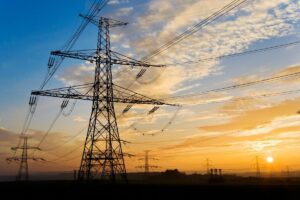
In wartime, ophthalmologists note an increase in the number of both military and domestic eye injuries of children, said Svetlana Tronina, Senior Researcher at the Department of Pediatric Ophthalmopathology of the V.P. Filatov Institute of Eye Diseases and Tissue Therapy of the National Academy of Medical Sciences of Ukraine .
“Today, we and our colleagues in Ukraine see an increase in the incidence of injuries in children, both related directly to military circumstances, for example, with shell explosions, and an increase in the number of domestic injuries,” she told Interfax-Ukraine.
The expert noted that military eye injuries in children occur in regions close to the combat zone.
“These are mainly mine-explosive injuries, some kind of shrapnel wounds associated with ammunition explosions. Most often, this is a combination of severe injuries not only to the eyes, but also to the face and other organs,” she said, summarizing the experience of pediatric ophthalmologists in Ukraine .
At the same time, Tronina drew attention to the fact that in wartime, the number of domestic eye injuries in children increases, which the expert associates, among other things, with migration, loss of housing, deterioration of living conditions and other circumstances caused by military operations.
“Many families are forced to move with their children, they are not always in comfortable conditions. Parents are forced to deal with issues of accommodation, employment, and children are left to their own devices more than in peacetime. Access to dangerous items is greater than usual.
According to her, children’s games at this time are more aggressive, often associated “with some kind of darts, bows.”
“We see general nervousness and a desire to play some kind of aggressive games, children have more access to dangerous things. Even girls get injured with sharp objects, which usually rarely happens to them. We note an increase in the frequency of eye injuries in children,” Tronina said. .
According to her, since the beginning of the war, children with both military and domestic injuries have been admitted to the Filatov Institute. In particular, a nine-year-old child was admitted to the department, who, as a result of a wall falling from an explosion, was injured in the right temporal region of the head, face, right eye – a severe contusion of the eyeball.
Among domestic injuries with which children were admitted to the clinic, the expert named injuries due to parental oversight. As an example, she cited a case where a 16-year-old patient was injured in his right eye by a nail while playing with his younger brother, who tied the nail to the end of an arrow. More cases: a teenager was injured in his left eye by a metal fragment, hammering a metal stake with a hammer; a three-year-old patient stuck a coin cell battery under his lower eyelid and received an extensive alkaline chemical burn to his eye; a six-year-old patient sustained an explosive eye injury while playing with another child who fired a firearm.
In the list of examples of such injuries – a 16-year-old teenager was chopping wood and a wooden rolling pin bounced into his eye; A 7-year-old boy shot himself in the eye with a compressed air pistol while playing at the service station, an 8-year-old patient injured his eye with a nail …
At the same time, Tronina recalled that the children’s department of the Institute. V.P. Filatova has a wide range of methods for the treatment and rehabilitation of childhood eye injuries. In particular, the institute has a lot of its own research developments on this topic, including those devoted to the improvement of surgical techniques, treatment and rehabilitation tactics.
“Children are not a reduced copy of adults. They have different methods of performing operations, a greater amount of postoperative treatment, so it is not enough just to carry out the operation at a high technological level, you still need to properly conduct the postoperative period,” she stressed.

Without the Black Sea ports, Ukraine is nowhere close to reaching the level of exports it urgently needs, said Kate Newton, Deputy Emergency Coordinator for the World Food Program (WFP Ukraine).
“The opening of the Black Sea ports is the most important way to return Ukraine to its former positions. Without the Black Sea ports, we cannot even reach the level of exports that Ukraine urgently needs. However, we are doing our best – by road, rail and now by river – to get closer to the maximum result. At the moment it is about 1 million tons per month, we may reach 2 million. But we urgently need access to the Black Sea in Ukraine,” Newton said at a briefing at the Ukraine media center in Kyiv on Thursday.
She recalled that before the war, Ukraine exported up to 6 million tons of grain every month. According to her, in 2021, about 400 million people around the world used Ukrainian products.
“We need to try to free up storage facilities across Ukraine, ensure that wheat, barley, sunflowers and everything that grows in Ukraine can be harvested and have the ability to be exported,” Newton said.

JSC Ukrzaliznytsia (UZ) has already tested a pilot project for installing Starlink satellite Internet on trains, Yuriy Shchigol, head of the State Special Communications Service, said in an interview with Liga.tech.
“When we contacted Starlink technical specialists after testing and showed how it works, even they were surprised that we were able to use Starlink in this way. According to its technical characteristics, it should not work at such speeds. But it works and provides services,” he said.
According to him, Internet from Starlink will be launched on Ukrzaliznytsia trains by the end of this year.
Shchigol noted that 12 thousand Starlink terminals are currently operating in Ukraine, which is about 20% of their total number in Europe.

Table (edible) salt is one of the most important products for the body, and the so-called salt-free diet can often lead to negative health consequences, says Doctor of Biology Svyatoslav Morozov. “Sodium ions are necessary to maintain the ionic balance in the cell, the bloodstream. Sodium chloride is also needed for the normal functioning of the nervous system, digestion, muscle contraction and many other processes in the body,” he said in a new video posted on the Expert Club YouTube channel.
At the same time, according to the expert, it is necessary to observe the daily intake of salt, since an excessive amount of this ingredient in food can provoke the development of diseases of the cardiovascular system.
“It is advisable to consume up to 4-5 grams of table salt per day. Excess salt does not lead to terrible consequences, but it creates a burden on the body. This is due to the fact that a significant amount of salt in food leads to a feeling of thirst, as a result of which blood vessels and the heart are already stressed due to excess fluid, which leads to an increase in blood pressure, ” the scientist explained.
The founder of the Club of Experts, Maksim Urakin, in turn, emphasized that, while observing the daily norms of salt intake, it is necessary to take into account not only the pure salting of food, but also the content of sodium chloride in the product itself.
“Today, salt is found in almost all food products. That is, we are talking about the amount of salt directly in all products that a person consumes per day,” the expert noted.
Watch the full video on the Expert Club channel at the link:
You can subscribe to the channel using the link:
The Ministry of Finance of Ukraine, which received the first grant from the United States on June 29 as part of a $7.5 billion state budget financing package, expects the next tranche to arrive in July.
“The support of our partners accelerates Ukraine’s victory. We have just received the first grant from the United States – $1.3 billion. We expect the next grant from the United States in July,” Finance Minister Sergei Marchenko wrote on Thursday night.
He clarified that the funds were received through the mechanism of the World Bank’s Multi-Donor Trust Fund as part of additional financing for the project “Public Expenditure Support to Ensure Sustainable Public Administration in Ukraine.”
Marchenko thanked the teams of the World Bank, the government, the Ministry of Finance and the Ukrainian Embassy in the United States for their well-coordinated work and the opportunity to receive these funds as quickly as possible.
In May, the US Congress passed a bill on the allocation of assistance to Ukraine in the amount of $40 billion, including $7.5 billion to finance the state budget.

From June 30, Ukraine began exporting electricity to Romania at a capacity of 100 MW, Prime Minister of Ukraine Denys Shmygal announced.
“Today, from 1 a.m., such exports went towards Romania. The initial volume is 100 MW,” he wrote on his telegram channel on Thursday.
He noted that in the first day alone, the state-owned company Ukrenergo earned UAH 10 million by selling access to the interstate section for export, and potentially Ukraine could earn more than UAH 70 billion a year from this.
“The potential for the export of Ukrainian electricity to Europe is up to 2.5 GW. Under this scenario, the state will be able to receive more than UAH 70 billion a year,” Shmyhal said.
The prime minister stressed that the energy visa-free regime with the EU, which began in March this year, gives its very visible and practical result, and the energy sector will become one of the drivers for the recovery of the Ukrainian economy, as it has already become a driver for integration into the EU.
According to the data on the ENTSO-E website, physical exports from Ukraine to Romania are made on June 30 with a flat schedule of 100 MWh.
As reported, Ukrenergo earned more than UAH 10 million at the first auction for the sale of a section to Romania on June 30, and almost UAH 14 million at the second auction, on July 1. The section was divided respectively by 5 and 6 companies. A total of 8 and 10 companies participated in the auction, respectively.
Ukrainian and European energy systems have been operating synchronously since March 16. On June 27, Europe opened electricity exports from Ukraine, which was supposed to start on June 30.